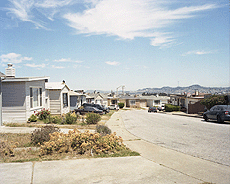Submission Guidelines for Essays
ezzo Cammin welcomes submissions of essays on any aspect of poetry in form by women. Suggested topics include studies of the work of a single author or group of authors; studies of how women have treated a particular form (such as the sonnet, or experimental forms); or controversies surrounding women writers and form (such as canonization or evolving attitudes toward poetic form).
 |
 Although we do not require essays to focus primarily or exclusively on formal elements of the poetry discussed, we do expect that essay writers will include some commentary on form as a way of illuminating their arguments. Although we do not require essays to focus primarily or exclusively on formal elements of the poetry discussed, we do expect that essay writers will include some commentary on form as a way of illuminating their arguments.
|
|
 |
Although we do not require essays to focus primarily or exclusively on formal elements of the poetry discussed, we do expect that essay writers will include some commentary on form as a way of illuminating their arguments. We do not limit our purview to the twentieth century, or to poetry in English; however, we do ask you to provide translations if you submit an essay on women poets who write in languages other than English. Also, for essays accepted for publication in Mezzo Cammin, we may ask the writer to assist us in obtaining permission to quote coyrighted material. Unfortunately, at this time we do not pay for essays. We plan to run special features on a particular author or topic at least every other issue; the new topic will be announced in the preceding issue. Our preferred length is 5000 words (20 pages) but shorter or longer pieces may be considered. Please follow MLA citation format.
Please submit original, unpublished essays or queries as e-mail attachments in MS Word.doc format, to: kbridgford@yahoo.com
Poetry Submission Guidelines
Mezzo Cammin welcomes submissions of poetry that pays particular consideration to form. Poems in structured forms are especially welcome, but poems that use form in interesting and experimental ways are also encouraged.
Please submit four-six unpublished poems in the body of an e-mail to kbridgford@yahoo.com.
|
|
 |
 |
|
 |
Marion Belanger: My current project, Continental Drift: Iceland/California, is structured around the geologic boundary that forms the edge of the North Atlantic Continental Plate. I was particularly interested in the fact that this geological boundary has no political allegiance, was not determined by wars, by financial interest, or national demarcation. It is a boundary that cannot be controlled or contained by human intervention. | |
|
|
|
 |
|
 |
|
|
|
|
